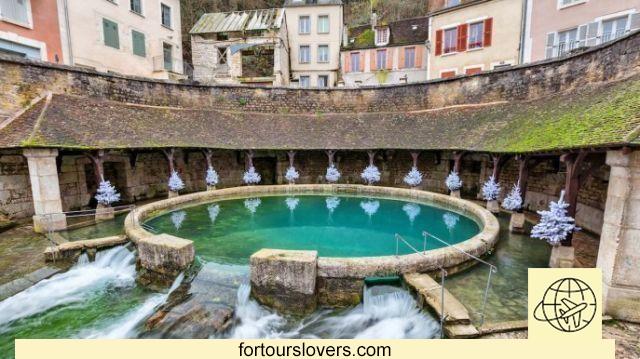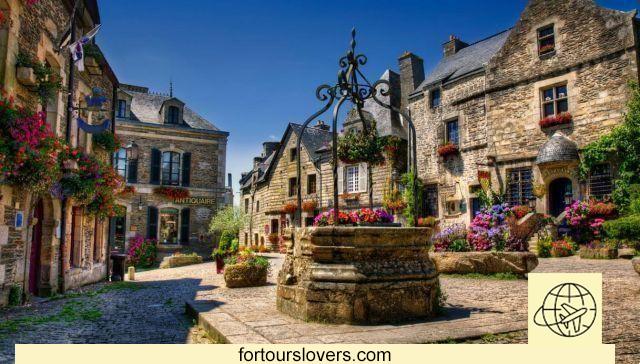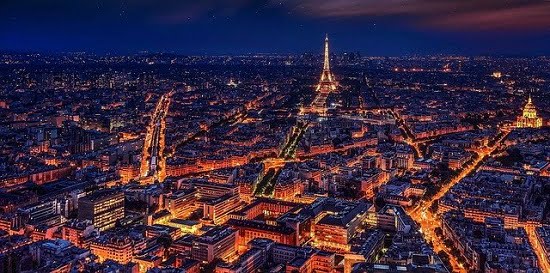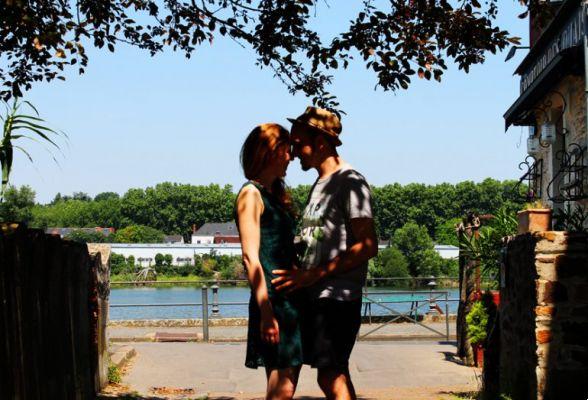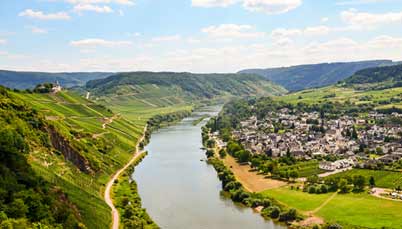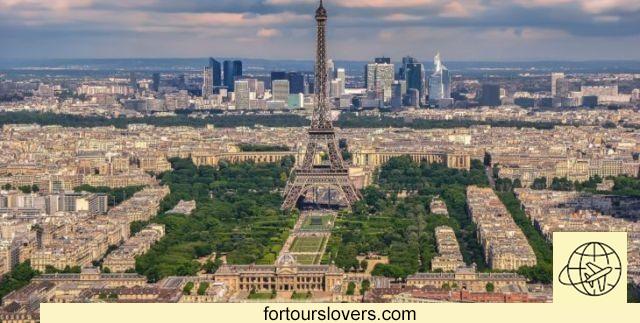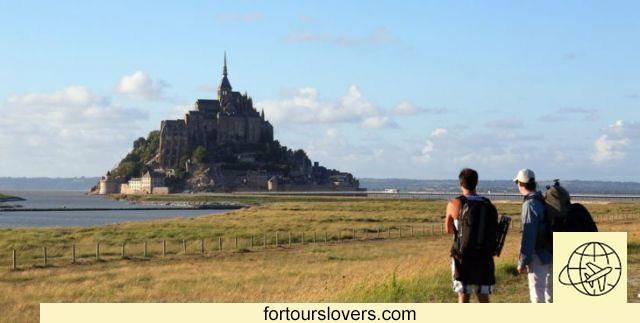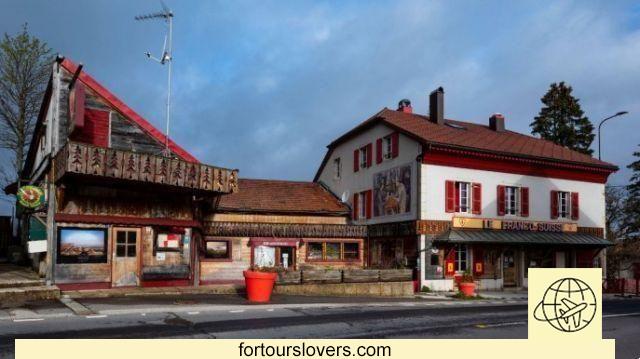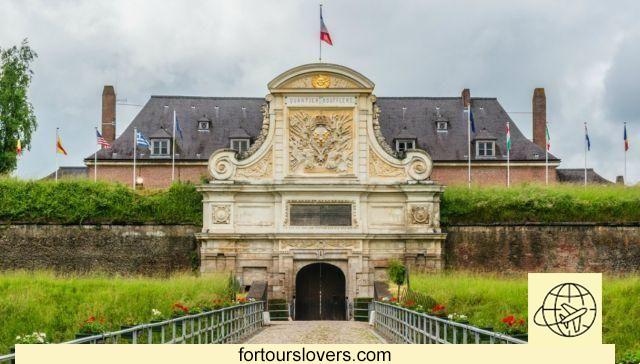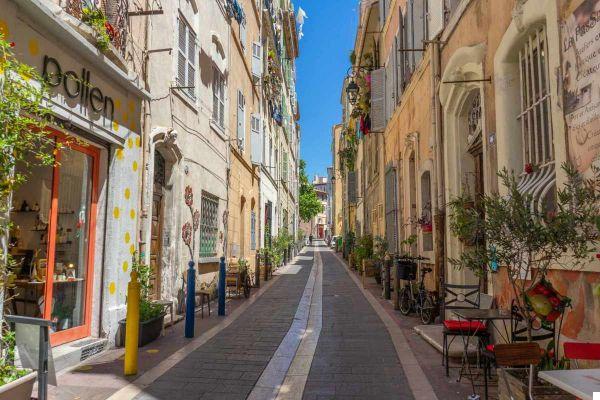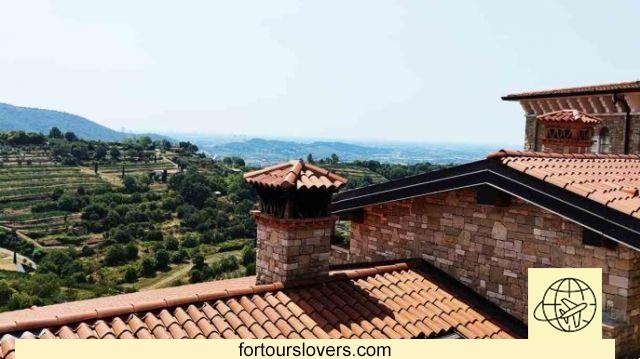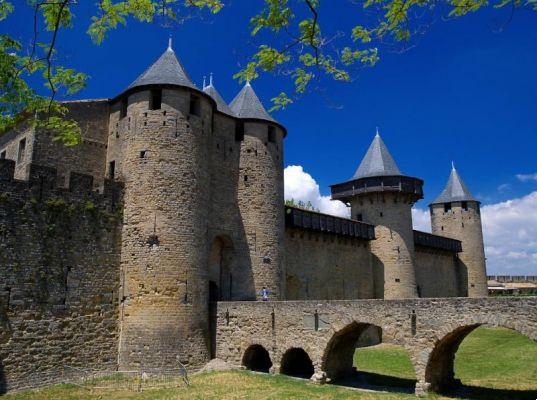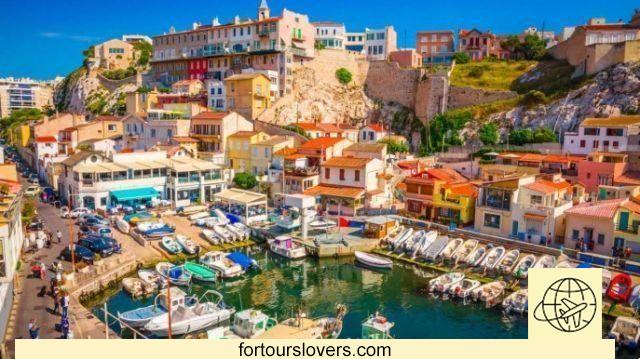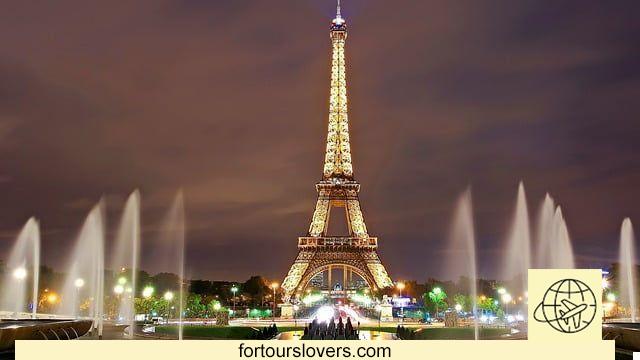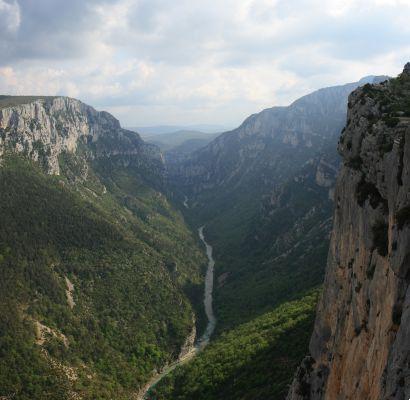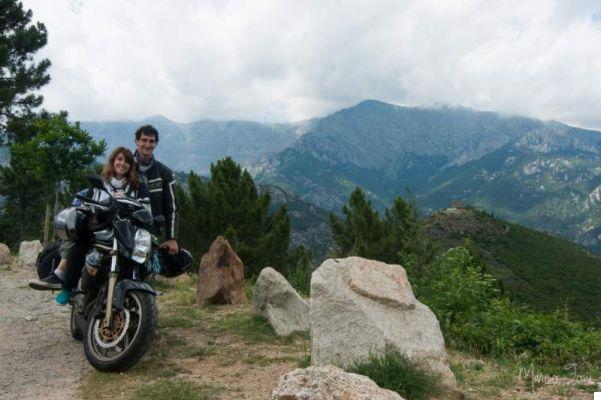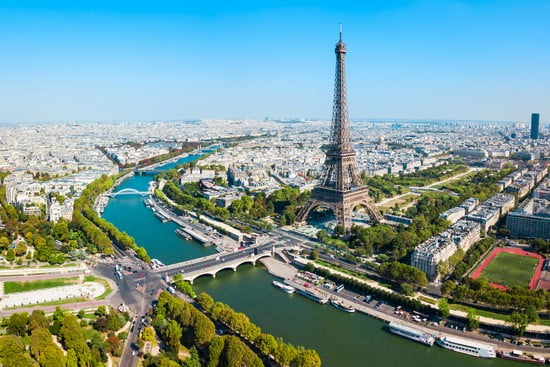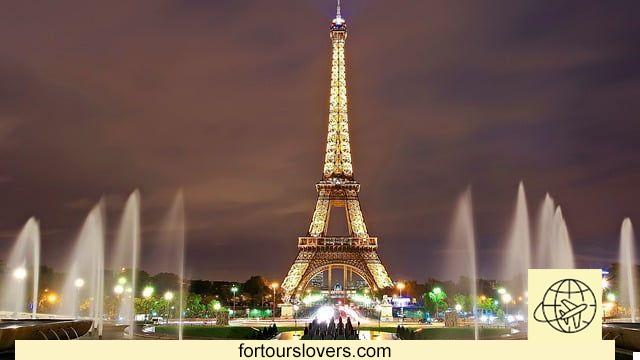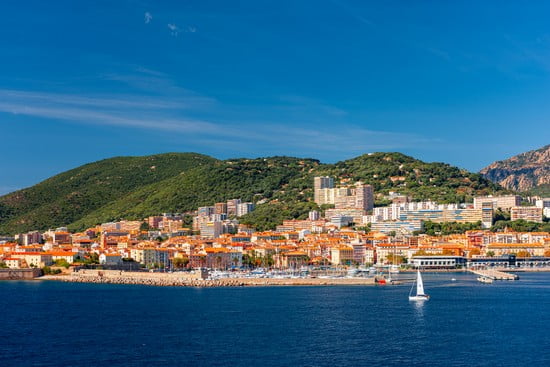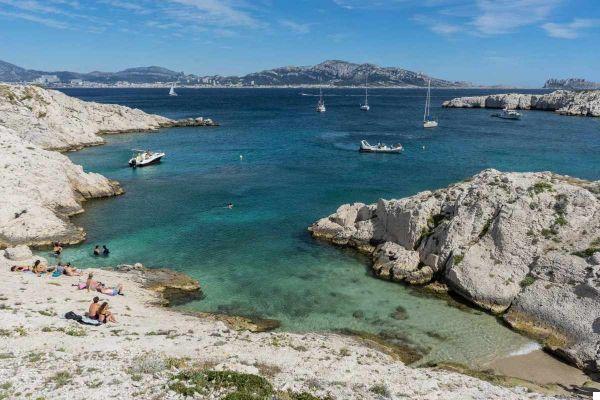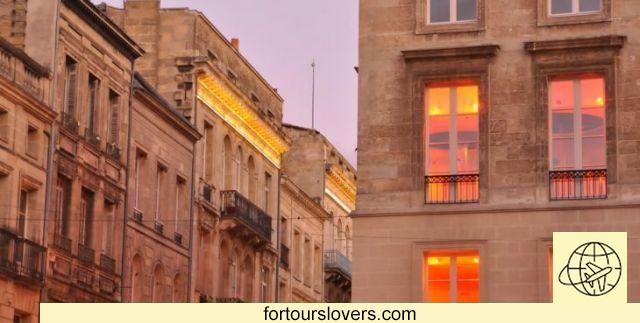
Bordeaux
11 things to do and see in Bordeaux and 1 not to doIf you have a great desire to travel and you are looking for one destination for a weekendwell then Bordeaux is definitely for you. Obviously, three days are not enough to get to know the city in depth but, being an area on a human scale in which it is rather easy to move around, they are enough for a first, satisfactory, approach to the places. The Old Town benefited greatly from the Unesco protection of 2007. In fact, on the one hand, thanks to this recognition it was possible to further enhance the architectural heritage; on the other hand, it provided the right incentive for the modernization of the museum offer and for the emergence of high-level shops, clubs and bistros. Special mention for the wine - according to many the best in all of France - and for catering which also stands at high standards. In conclusion, there are all the "ingredients" for an unforgettable holiday. Below we review the main tourist attractions of Bordeaux. Happy reading.
1 Cathedral of Sant'Andrea
If the Unesco protection for the historic center of Bordeaux dates back to 2007, that for the Cathédrale Saint-Andrè dates back to the late 90s of the last century, when it was inserted between the French stages of the famous Camino de Santiago. After all, the history of this church is very old: consecrated for the first time in 1096 by Pope Urban II, the first remains date back to the ninth century. The Cathedral that we admire today, however, was almost entirely built between the XNUMXth and XNUMXth centuries. A masterpiece of Gothic art that, between the outside and the inside, boasts many points of interest on which it is worth dwelling. Above all, the Take the Royale, one of the building portals bearing several sculptures which illustrate scenes from the Last Judgment according to Matthew. There are three bell towers: two are part of the building and represent a stable reference point of the Bordeaux sky line, while the third, which is also the most famous, was built in the XNUMXth century right next to the Cathedral. Let's talk about the Pey Berland tour (from the name of the bishop who wanted its construction) and from the top it offers a spectacular panoramic view of the city. The only warning, the over 200 steps to do to reach the summit. For more information: www.cathedrale-bordeaux.fr.
2 Museum of Aquitaine
At the beginning we wrote that a weekend is just enough for a first approach to places. Bordeaux and the Aquitaine region in fact boast a thousand-year history to know which would require a much longer stay. However, there is an alternative of great cultural importance that allows you to retrace the history of the city and the surrounding area even for those who have just three days available. We are talking about the Muséè d'Aquitaine set up inside the former faculty of literature of the French city. In fact, defining the Museum of Aquitaine as simply a local history museum is inappropriate. For the quantity and quality of the finds - from prehistoric times to the twentieth century - we are talking about one of the most important museums in France, and probably in the world for what concerns the material on the slave trade. Trade of which the port of Bordeaux was one of the main hubs, a link between Africa and the Americas along the Atlantic route. For more information see the Official site: www.musee-aquitaine-bordeaux.fr (English version available).
3 Museum of Fine Arts
About 600 meters from the Aquitaine Museum is the Museum of Fine Arts (Musée des Beaux Arts), another highly recommended stop on a trip to Bordeaux. The Museum is located inside Palazzo Rohan which also houses the Town Hall (Hotel de Ville). It is divided into two distinct spaces: the south wing, dedicated to collections ranging from the 400th to the end of the 800th century; the north wing, on the other hand, is dedicated to XNUMXth century art. The balance between these two moments represents the main effort of the curators: to increase the "ancient" collection (numerous Flemish and Italian paintings of the '600), without neglecting the contribution of the art of the' 900. Several prestigious names. Just to name a few without claiming to be exhaustive: Delacroix, Picasso, Renoir, Matisse and so on. For more information on history, timetables, prices and visiting methods, consult the Official site: www.musba-bordeaux.fr (English version available).
4 Rue Sainte Catherine
Rue Sainte Catherine it represents for Bordeaux a bit what the Champs Elysée is for Paris. A real natural shopping center which, considering the two sides of the road (approx. 1,2 km long), gives almost three kilometers of shop windows and, of course, bars, bistros and clubs of all kinds. A flagship for the city also for the farsightedness with which the public administration, even in 1984, decided to pedestrianize the entire street. The result was rewarding both from a commercial and touristic point of view, with a flattering turnout all year round, even astounding during the sales. To be seen!
5 Big Cloche
About 300 meters from Rue Sainte Catherine is the Grosse Cloche (Port Saint-Elois), ancient bell tower of the town hall and, above all, one of the last testimonies of medieval Bordeaux. Built in the fifteenth century, this bell tower has marked the days of Bordeaux for centuries even if, for some time now, the bell (renamed Armande Louise) rings only a couple of times a year: January 1st (New Year); May 1 (Labor Day); July 14 (Storming of the Bastille); July 28 (July Revolution) and November 11 (end of the First World War). It's not all. You can visit the underground for a long time used as a prison for those who did not respect public order in the city. A blast from the past that is worth exploring. Not to be missed!
6 Basilica of San Michele
Like the Cathedrale Saint Andrè, the Basilique Saint Michel has been a Unesco World Heritage Site since 1998. The motivation is the same: this church, consecrated as a minor basilica in the early 900s, is one of the French stops on the famous Camino de Santiago de Compostela. The similarities don't end there. The bell tower of the Basilica of San Michele, in fact, just like that of the city cathedral, is detached from the main body. Therefore the church and the tower must be visited separately. The church deserves above all stained glass windows and chapels along the side aisles. The first date back to the 60s of the last century, since the original ones were destroyed during the Second World War. Nonetheless, the scenic effect, with the light entering the church through the stained glass windows, is equally stunning. The side chapels, on the other hand, date back to the 700s and are each representing a different saint, in turn the patron saint of specific artisan guilds in the city. Absolutely, the chapel of San Giacomo, destination of the pilgrims of the aforementioned Camino de Santiago, is the one that records the highest number of visitors. As for the Flèche Saint Michel, The name of 114 meters high tower, you have to climb over 200 steps to enjoy the view. Maybe a little tiring, but it's totally worth it.
7 Stock Exchange Square
The seventh place among the things to do and see in Bordeaux should not be misleading. Place de la Bourse, in fact, is the favorite haunt of Bordeaux people and tourists and, especially for the latter, it is almost always the starting point for exploring the city. From an architectural point of view this square, designed by the architect Ange Jacque Gabriel, represents one of the highest expressions of French neoclassical art. For its construction, dating back to the eighteenth century, the medieval walls and several residential buildings were demolished. In their place, on the sides of the square, two identical buildings were built: the Customs Palace and that of the Stock Exchange (hence the name). To what has already been said, another element of great charm has been added for some years. Let's talk about the Miroir d'Eau, a large reflecting fountain built in front of the Palazzo della Borsa, whose body of water reflects images, lights and details of the surrounding buildings. Not only. About every 20 minutes, jets of steam leave the fountain and envelop the square, generating a "fog effect" that gives memorable images to photography enthusiasts. Therefore, do not forget reflex cameras, tripods and all the equipment you need in these cases to create author's shots. And, again speaking of shots, it is fashionable to treat yourself to a selfie in the company of Eufrosine, Aglaia and Talia, the statues that adorn the Fountain of the Three Graces (Fontaine des Trois Gracies) right in the center of the square. Not to be missed!
8 Great Theater
In a city like Bordeaux, an Opera House could certainly not be missing. And what a theater, one might say! According to the critics, in fact, the Grand Théatre de Bordeaux, designed by the partisan architect Victor Louis, has one of the most beautiful rooms of the XNUMXth century. Room that can be visited by booking through the Opéra National de Bordeaux, which manages every aspect - not just the truly artistic ones - of the structure (to book a visit click here). Even the outside alone, however, is worth a stop. To welcome tourists there is an imposing neoclassical facade with 12 Corinthian columns which in turn support the entablature on which 12 statues depicting 9 muses and 3 goddesses (Juno, Venus and Minerva) are placed. A majestic entrance to a majestic theater that in several circumstances it was also the seat of the French National Assembly. To be seen!
9 Basilica of San Severo
Like the Cathedrale Saint André and the Basilique Saint Michel, the Basilique Saint Seurin has also been a UNESCO World Heritage Site since 1998. Also in this case, as for the first two aforementioned, the recognition is due to the Camino de Santiago de Compostela of which the church was for centuries one of the main stops in French territory. From an architectural point of view, theRomanesque imprint, demonstrating the antiquity of the building built starting from the 800th century on the remains of a Gallo-Roman necropolis. Obviously over time the church has been restored several times: to say, the facade as we see it now, dates back to the first part of the XNUMXth century. Inside we point out the bas-reliefs of the main altar. These sculptures trace the life of San Severo, patron saint of the basilica and above all of the city of Bordeaux. Also worthy of mention is the crypt where the remains of various city bishops are kept. There is also the tomb of San Fort, the first bishop of the city, to whom the Bordeaux inhabitants have always been very fond of. Not far from the church, finally, we point out the Site Archeologique de Saint Seurine. Excavations carried out at the beginning of the 900th century have brought to light aancient Christian necropolis, of which today it is possible to see the tombstones, decorations and countless other finds. To be seen!
10 Stone Bridge
Made in 1822 on the initiative of Napoleon Bonaparte, the Ponte de Pierre is another unmissable stop on a trip to Bordeaux. Obviously it is because of its historical importance: this infrastructure, in fact, allowed the union of the two banks of the Garonne river (today it is also crossed by trams); but it is also so from a photographic point of view, being, together with the Place de la Bourse mentioned above, one of the most evocative corners of the city. Especially in the evening, when the soft lights of the twilight, together with the public lighting, give beautiful shots, to the point that more than one has suggested the compared with the famous Chain Bridge in Budapest. To be seen!
11 City of Wine
A museum to celebrate viticulture. First of all the local that the Bordeaux inhabitants, as mentioned at the beginning, are very fond of; but also the foreign one with stories from all over the world, because that of wine is an ancient tale capable of uniting geographically dispersed peoples and culturally different traditions. This is broadly the mission of the City of Wine (La Cité du Vin) of Bordeaux. It is a iconic building, with rather bold architectural lines, inaugurated in 2016 in the presence of the then President of the Republic François Hollande and the mayor (as well as former Prime Minister and Foreign Minister) Alain Juppé. For more information on the history, times, prices and ways of visiting, consult the Official site: www.laciteduvin.com (English version available).
1 Better (if possible) not to visit Bordeaux in winter
Bordeaux in recent years has experienced a real tourist exploit. Even the New York Times in 2016 included it in second place among the world tourist destinations followed by Malta and preceded only by Mexico City. The awards, as we highlighted in the article, however, had begun earlier: above all the inclusion, in 2007, of the historic center among the Unesco World Heritage Sites. In short, a living city that has been able to open up to tourism without renouncing its own identity, indeed enhancing its historical strengths from architecture to wine. It is therefore difficult to find a weak point. If you really need to find one, maybe it is better to avoid the winter months (December to March). It is not so cold, thanks to the mitigating action of the Atlantic Ocean, but it rains very frequently.




